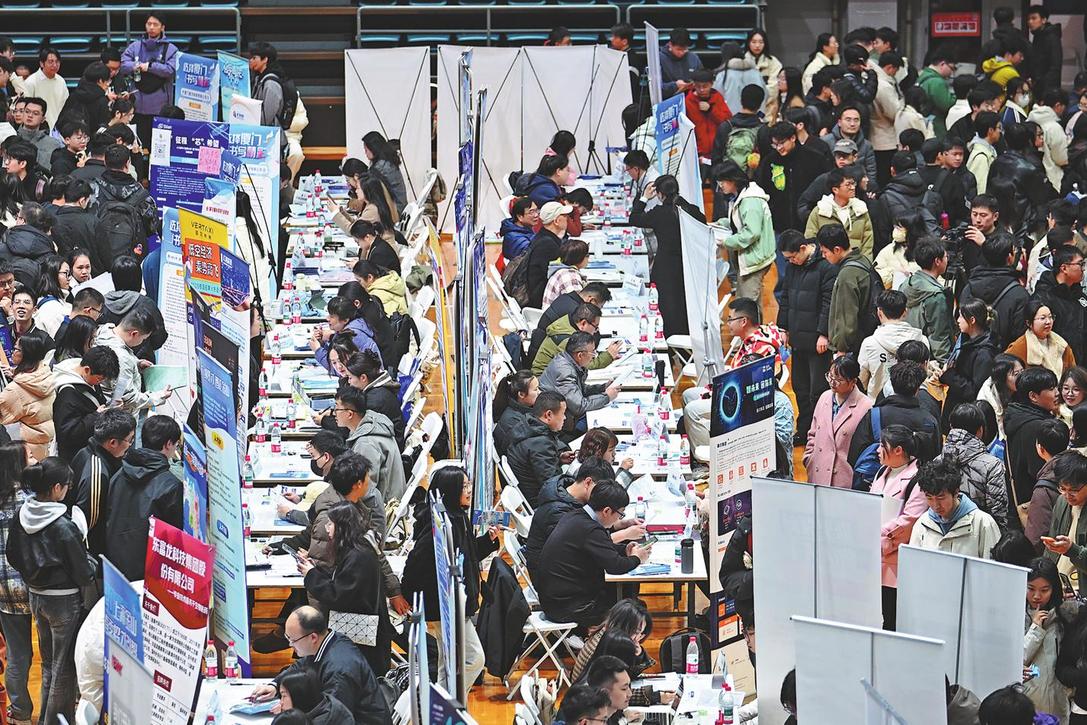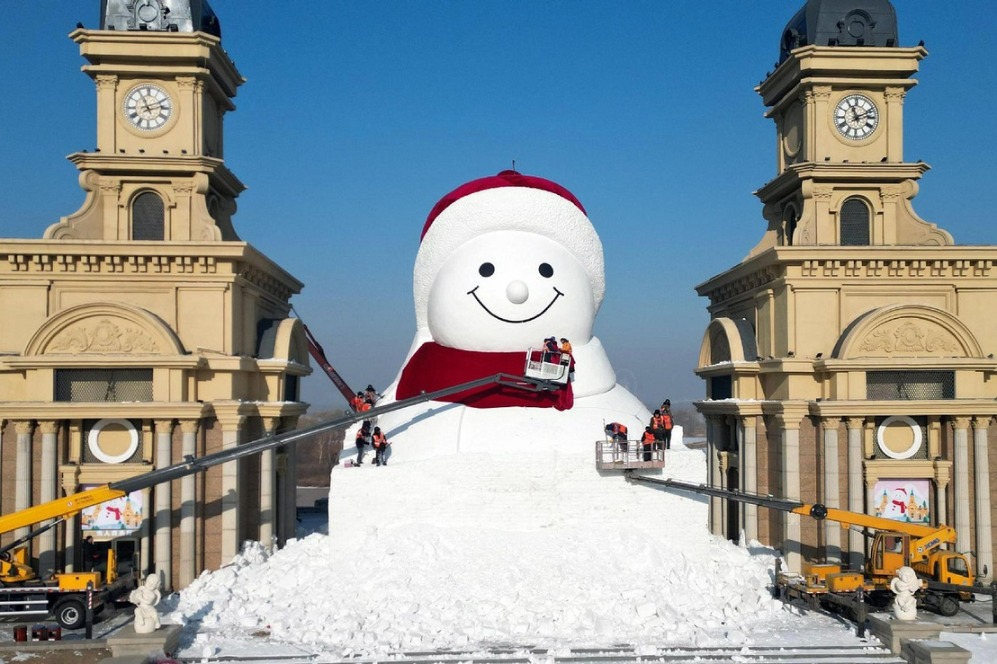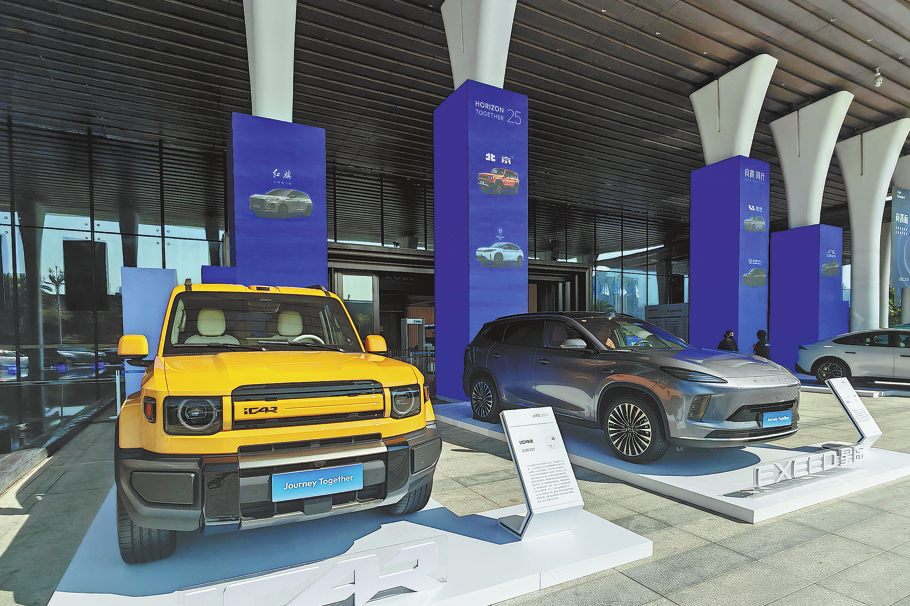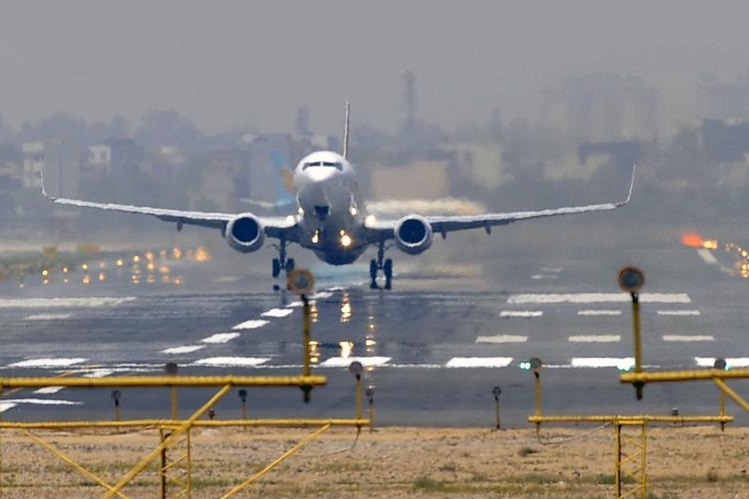On a wing and a prayer

| Hu Bin (left) and Liu Kaijun, two members of the Beijing Flying Heart RC Plane Club fly their remote-controlled planes in the city's suburbs. Wang Jing / China Daily |
| Flying enthusiasts tour China's fifth remote-controlled plane exhibition in Beijing. Feng Yongbin / China Daily |
Remote-controlled airplanes are becoming increasingly popular in Beijing
After two failed attempts at takeoff, Tao Li finally managed to get his recently purchased radio-controlled plane airborne. The plane with a 1-meter-wingspan soared into the air before banking and landing safely. However, during the fourth flight, the battery died mid-turn and the model aircraft plummeted to the ground, resulting in a large crack in the nose section.
Tao, a 30-something model plane buff whose boyish looks belie his age, examined the damage, retrieved the parts scattered on the ground and frowned. The motor had been damaged and it will cost a small fortune to replace it.
In the four years he's been flying remote-controlled aircraft, a hobby he described as "addictive", Tao has spent about 200,000 yuan ($32,551) on a wide range of models. For him, the excitement of flying the planes is far more important than their appearance.
"When you manage to get these aircraft to perform acrobatics and difficult maneuvers in the sky, the sense of achievement is really indescribable," Tao says proudly. In the past three years, he and his friends have spent at least one day every weekend flying their planes in an open terrace near the China Science and Technology Museum - weather permitting - and have made a bike lane of smooth concrete into a perfect airstrip.
Although the hobby is essentially an individual pursuit, collective experience can help things to go more smoothly. "We get together to discuss the flight capabilities of various models of aircraft. We brainstorm to solve each other's problems, so we can help everyone cut corners and get their planes back into the air with the minimum of fuss," Tao says. A year ago, he joined the Beijing Flying Heart RC Plane Club, where he and his fellow aviation enthusiasts organize all kinds of competitions.
Tao's interest in RC planes was first aroused when he read a magazine that carried page after page of photos of model aircraft. The photos rekindled a childhood dream. "When he sees planes soaring overhead, every boy dreams about flying for real. Like many enthusiasts, I quickly fell in love with RC planes through a longing for freedom, and this hobby allows you to fly whenever you want," he says.
A world of aircraft
Stepping into Tao's bedroom is like entering an entire world of model aircraft. Planes of every description, large and small, engines, remote controllers, batteries, glue, and other paraphernalia fill every available space.
Beijing's RC addicts seem to be getting younger, so Tang Xuan - a 30-something veteran of the scene - stands out. The software engineer from Beijing's Zhongguancun district has been involved with model planes for nine years, and uses his leisure time to pass on his experience to the "new kids in town".
"Assembling an RC plane costs from several hundred yuan to more than 10,000," Tang says. "Every veteran player produces his own unique aircraft - after all, many are experts in aerodynamics, flight mechanics, radio, electronics, materials, mechanics, and so on - but I always suggest that beginners choose a 'ready to fly' model, which means they won't have to worry about building the machine. When you have scant knowledge of things such as aerodynamics, you are almost bound to get it wrong, and so buying an RFT model will at least rule out flight failures caused by the plane itself," he says.
His teaching approach starts with two weeks of lessons on the basics of aerodynamics, a program that's designed to provide newcomers everything they will need to know to keep the plane airborne. After that, Tang asks his students to conduct simulated flights on specially designed computer software.
"RC planes aren't easy to fly, and even experienced pilots aren't successful in every test flight. Your expensive plane may disintegrate in mid-air, or shatter on the ground, so using the computer's flight simulator can really help newcomers avoid wasting money unnecessarily," he says.
He says a newcomer can become a reasonably proficient pilot by using the simulator one or two hours a day for two months. However, he warns against doing too much flying, because senses become dulled and that will lessen the advantages of the training. The curriculum is divided into eight weekly segments, with the first week being spent learning to take off smoothly and set the correct course.
During the second to fourth weeks, beginners learn to steer the aircraft and keep it level. The fifth and sixth weeks are devoted to practicing regular landing procedures, and the final two weeks show newcomers how to perform emergency landings.
According to Tang, the importance of the training should not be underestimated, because it tests one's mental abilities and enables the pilot to deal with all in-flight contingencies.
After spending long days flying model aircraft in the strong summer sun, his skin has turned a deep, orange color. "We RC addicts don't have good skin," he says, with a grin. "Let me say this: To some people, these planes are just toys, but not to us. You can't imagine the emotions we have invested in them. Some people don't understand us so what? We're happy."
zhanglei@chinadaily.com.cn
(China Daily Africa Weekly 09/26/2014 page24)
Today's Top News
- UN envoy calls on Japan to retract Taiwan comments
- Innovation to give edge in frontier sectors
- Sanctions on Japan's former senior official announced
- Xi stresses importance of raising minors' moral standards
- Coordinated reform key to country's growth
- Shandong gives new life to traditions
































